In Riverside, California, community groups and university faculty and students are helping California State Parks tell a broader, more inclusive, and more accurate history of the state’s most beloved crop: citrus. Migrants and immigrants built California’s citrus industry, clearing fields, planting trees, and harvesting and packing fruit. Though they sustain the industry to this day in Inland Southern California, these groups are not well represented in the story of citrus the California Citrus State Historic Park tells. Through community-engaged research and a series of public programs and interpretive installations, the Relevancy & History Project partnership between of University of California, Riverside and California State Parks is modeling new ways of engaging with the diversity of the state’s history and cultural heritage.
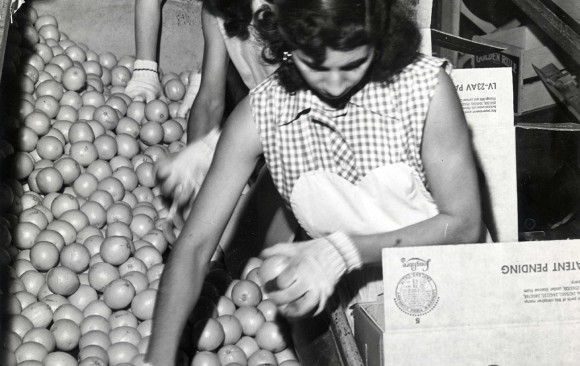
“[The project] at California Citrus State Historic Park focuses on migration and immigration and highlights hidden histories of people and place,” explains Catherine Gudis, director of public history at UC Riverside, who helped initiate the project. “The project has been shaped through a series of partnerships beyond UC Riverside and California State Parks. Those partnerships include community groups, other universities, and other non-profit organizations. The project at large aims to produce new research to include student participation, community story collection, outreach events, exhibits, and site-based artistic interventions. We’ve been highlighting the work through community festivals and a co-created exhibition.”
In the earliest phases of the project, Gudis worked with public history graduate students and several undergraduate classes at UC Riverside to conduct the research. Graduate students Megan Suster and Steve Moreno-Terrill also served as Public Humanities Fellows to the project, and have since been hired by the park as full-time interpretive staff. Undergraduate classes at California State University, San Bernardino and California State University, Fullerton also contributed. “I taught an undergraduate research seminar focused on public histories of immigration and we studied the park and citrus history in the region,” Gudis says. “Students were invited to do research on immigrant groups in the area.”
Gudis and her students worked very closely with the community to conduct this research. “For us, research interlocks with community engagement,” Gudis explains. “Collecting oral histories requires being out in the world. Public talks and volunteering at events held by other organizations become a central part of data collection. Every time we presented, someone else would come out of the woodwork with a story.” Research also involved community collection days at public libraries, where the team met with people to interview them and digitize their photographs. Because of the centrality of citrus in Inland Southern California, everyone had a story to tell. These interviews and open-to-all meetings hosted by the Relevancy & History Project often became discussions of what the community members would like to see at the California Citrus State Historic Park.
The students and other faculty at UC Riverside, CSU San Bernardino, and CSU Fullerton also helped chart the project’s direction.
“They were our study group in a way,” Gudis continues. “What were their responses to the park as the younger and demographically diverse generation of stakeholders? What would they want to see? Why had they never been there? So they had to take a hand in trying to both explain how they felt about the place and to envision the project.”
Building on these ideas, the project team developed a festival, exhibition, and placemaking installations. “As we talked to docents and other people at the park and as we brought community folks through, they were interested in having more moments when history told through personal experiences could be acknowledged,” Gudis explains.
These came to include two stereographic viewers created by Arnold Martin that highlight the people who work in the citrus groves and in the packing house. They offer a three-dimensional visualization that reinscribes citrus workers into the landscape of the park.
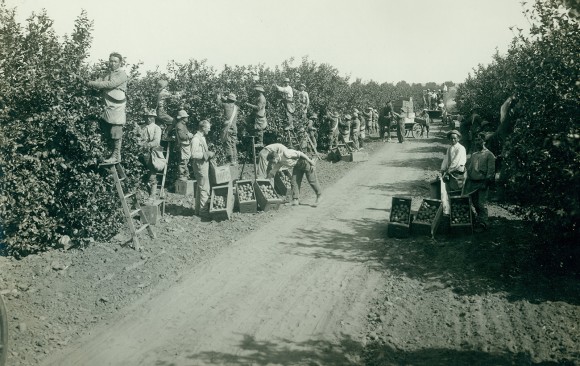
The workers’ stories are also integrated into interpretive signage that combines photographs of contemporary laborers by Thomas McGovern and poetry by Juan Delgado, and the exhibition “Finding Ourselves in the Groves: Stories and Storytellers of Citrus in Inland Southern California.” The exhibition in the park’s visitor’s center features the portraits and stories of California’s migrant and immigrant citrus workers, including youth and Braceros. “We imagined this as a portrait gallery that would represent people and stories not been represented elsewhere and who are not usually found even in traditional archives,” Gudis notes. It contextualizes the park, highlighting the people that made it possible.
The project also involved public events, including Sweet N Sour Family Festivals. “We augmented what the park already does, which are tastings during harvest season,” Gudis says. Activities included a citrus packing competition and a series of student-led tours focusing on native creation stories, labor issues, and the preservation of the region’s agricultural past. There were tables for collecting oral histories from visitors, which included memories of citrus from as far away as Afghanistan and the Philippines.
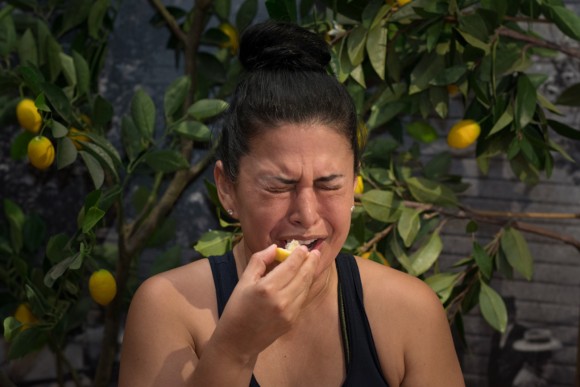

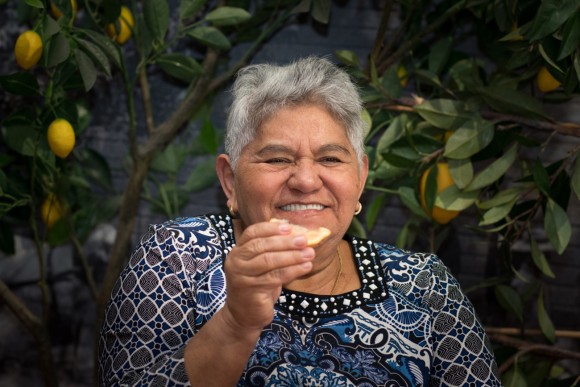
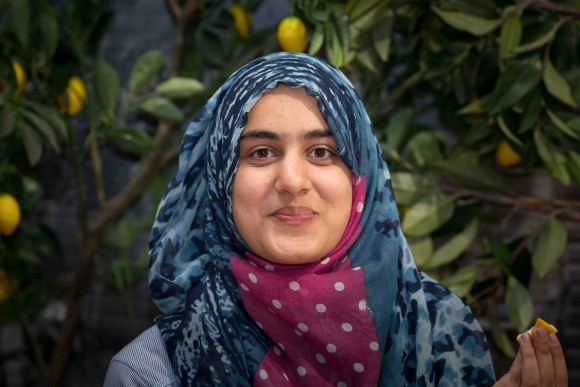
A highlight of the festival was Sour Puss, a photo series and exhibition by Kate Alexandrite. “It’s staged portrait photography,” Gudis explains. The photographer gives visitors a citrus fruit, “the sourest of the sour… you taste the fruit and we capture your expression when you’ve tasted it,” Gudis recalls. “People loved it.”
The Relevancy and History Project is ongoing. To learn more, visit their project website.
